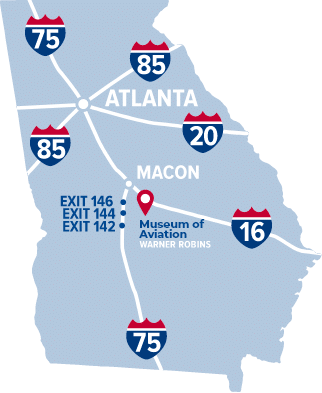The F-84, the USAF’s first post-war fighter, made its initial flight on 28 February 1946. It began rolling off the production lines in June 1947, and by the time production ceased in 1953, approximately 4,450 “straight-wing” F-84s (in contrast to the swept wing F-84F) had been built. In addition to being used by the USAF, many were supplied to allied nations participating in the Mutual Security Program. During its service life, the F-84 became the first USAF jet fighter able to carry a tactical atomic weapon.
The aircraft gained its greatest renown during the Korean Conflict where it was used primarily for low-level interdiction missions. Almost daily F-84s attacked enemy railroads, bridges, supply depots and troop concentrations with bombs, rockets and napalm.
During the early 1950s Robins overhauled and repaired a large number of F-84s for service in Korea. Later, Robins modified and updated Thunderjets for service in Europe as part of Project High Flight. The F-84E on display was delivered to the USAF in April 1951 when it was assigned to the 116th Fighter-Bomber Wing then stationed at George AFB, CA. In July 1951 the unit moved to Kisarazu AB in Japan and began its combat career over Korea. In July 1952 it moved to Kunsan AB, Korea where it continued to fly until it was returned to the United States in June 1953. In January 1955 it was transferred to the 2589th Reserve Flying Center (USAF Reserve) at Dobbins AFB, Georgia until it was removed from service in November 1956. It was acquired by the Museum in 1987.











